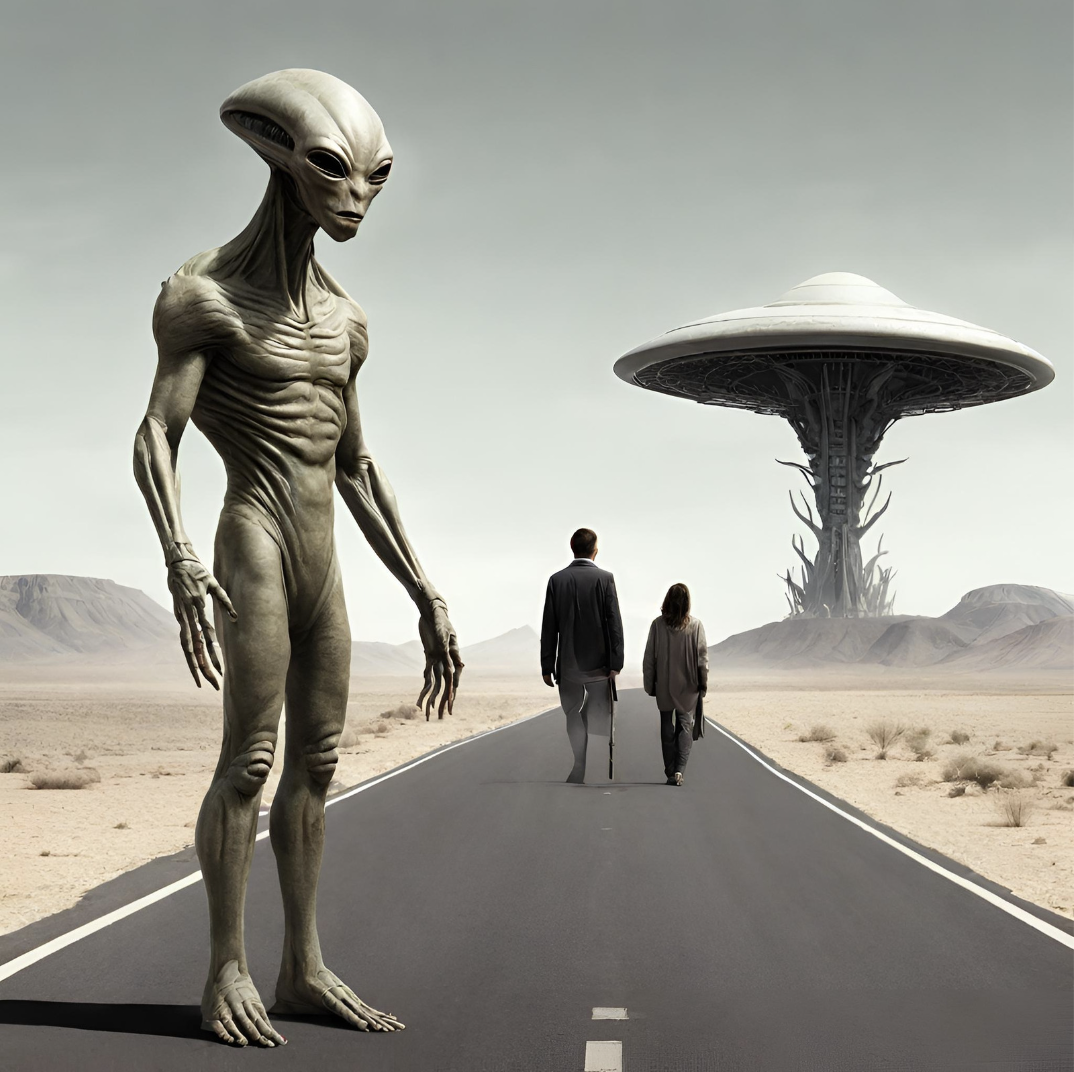The Log welcomes diverse perspectives in opinion essays and letters to the editor. Following the guidelines of The New York Times, The Log “…reserves the right to edit for space, clarity, civility, and accuracy.” The Log will not publish anonymous opinions.
***
“In a universe filled with billions of galaxies, each possessing countless stars and planets, the tempting question lingers: What if the belief that aliens are real is not just a plotline for science fiction but an exciting reality waiting to be unveiled?”
It’s 2012, and a young Will is sitting in his space pajamas with a cup that is filled to the brim with hot chocolate right in front of his dad’s legs. Will has been looking forward to this moment all day; he finally gets to watch E.T. with his dad. He’s been begging his dad forever, clawing at his leg hairs, just to convince him to see the greatest movie of all time. During the movie, Will’s eyes seem to glow when he sees Elliot and E.T. soar through the night on their flying bicycles, bathed in the moon’s glow. The wind rushes past as they navigate the sky, a sense of wonder enveloping them. Below, the suburban landscape fades into the distance as they bond in a moment of limitless freedom. Will turns around to face his dad and asks him in the most exciting and everlasting voice, “Do aliens exist?”
The first way that we can look for any sign of life is as we look at planets that resemble Earth, the only planet we know of that is habitable. This means we look for planets that are roughly the same size as Earth and orbit the right distance from their star to support liquid water at the surface, known as the habitable zone. Another key factor is the star’s size. It is unlikely that any type of life, especially complex life, could evolve on stars that are much bigger than the Sun due to their extremely brief lifespan.
A potentially habitable exoplanet is a hypothetical type of planet that has water and may support life. As of March 2020, a total of 55 potentially habitable exoplanets had been found. Astrophysicist Frank Drake developed the Drake Equation in 1961. It is a theoretical framework for assessing the possible predominance of alien civilizations and providing evidence to support their existence. The formula considers variables including the frequency of star formation, the percentage of stars that have planets, and the chance that intelligent life may eventually arise on those planets. 10 x 100% x 25% x 100% x 1% x 50% x 1,000,000 = 12,500 intelligent alien civilizations that may currently exist. Next, since Earth is a young planet in relation to the age of the universe, it is possible that extraterrestrial civilizations began, developed, and eventually vanished long before Earth was ever a planet.
We are continually searching the universe for signs of water because we understand that it is an essential component of life. It turns out that there seems to be a lot of it in the cosmos, maybe even inside our solar system. There is enough evidence from Mars’s Curiosity Rover that rivers and lakes formerly flowed through the planet, and there may even be water on several of its moons now. One of Jupiter’s numerous moons, Europe, is particularly noteworthy because it seems to have a liquid ocean under its surface. Equally important, there are species and bacteria on our planet that can survive in harsh environments where humans would perish. Most of Earth’s living forms, including humans, depend on precise environmental factors for their survival. This leads us to believe that many planets with environments vastly different from Earth’s may be deemed uninhabitable for life. However, extremophiles show us that life not only survives but thrives in harsh conditions. Life exists on what we would regard as inhabitable planets if bacteria and species can survive in these circumstances.
Lastly, Naturally, Apollo 11 is most known for being the mission that sent humans to the moon for the first time, but it also appears to support the possibility that there is alien life. After three days of the flight, the astronauts contacted message control to inquire about their knowledge of the location of the rocket’s separated part. The item they observed seemed to be traveling with the rocket, but it was disconnected and 6,000 miles distant from them, which is why they noticed it. According to purportedly released documents, Aldrin and Armstrong reportedly observed two massive spaceships on the moon. However, there was a two-minute radio silence after this, which has led many to speculate that NASA purposefully kept this information from the public.
Through the vastness of the universe, coupled with the growing body of evidence from astronomy, planetary science, and even historical space missions, it wouldn’t be surprising if we encountered intelligent life in the foreseeable future.

















